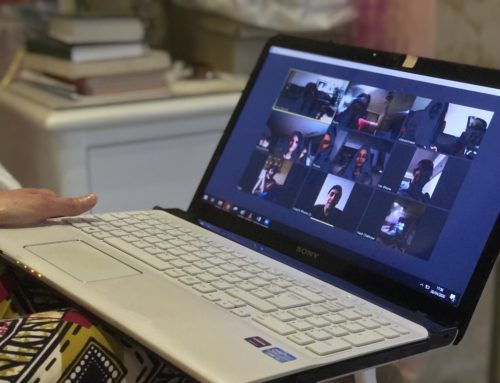When nonprofit communicators think about media relations, they often focus on proactively pitching stories and reaching out to reporters and editors.
But effective media relations isn’t just about pushing our story ideas on unsuspecting reporters.
It’s also about being ready and responsive when a reporter or editor is already pursuing a story.
Being responsive isn’t just about being quick to answer a phone call or an email from a reporter on deadline.
It also means having accessible, accurate, and useful information available on your website. This might sound obvious. But as a former reporter and editor, I can attest that very few organizations actually have an online newsroom that provides journalists the information they need.
Why does this matter?
Imagine you are in charge of communications for a nonprofit that provides an early-childhood education program for at-risk children and the governor in your state is proposing a budget that would slash funding for early-childhood education.
A reporter at your city’s newspaper is assigned a story by her editor to find out what the budget cuts would mean to local children. And because the reporter doesn’t often cover nonprofits, she begins looking at the websites of local charities to find people who might be willing to be interviewed.
Chances are, what that reporter finds on those websites is going to determine what ends up in her story. If she comes to your site and finds the information she needs, she is likely to pick up the phone and call you for an interview. If she cannot find what she needs, she’s going to quickly move on.
Here are five things that you should have on your site to help your nonprofit make it into the story:
1. An Easy-to-Find News Page
When reporters come to your site looking for information about an organization or a business, the first thing they typically look for is your “Newsroom” or “News” page.
This page should be easy to find — either through a direct link on your home page or, at the very least, through the “About Us” section of your website.
If you don’t have a News page — or if she can’t find it — chances are she’s going to leave your site and go looking for a nonprofit that does.
2. Contact information
Having a News page is a great start, but that page needs to be more than just a placeholder.
If you’re really serious about having her reach out with an inquiry, you should make it as easy as possible for her to do so by providing the name, e-mail address, and phone number of your media contact prominently on that page.
If you have a single spokesperson or point of contact, that should be really easy to do. If you are a larger organization with multiple spokespeople, you can provide a prominent link to another page that lists all of your key contacts (as well as their contact information).
I suggest providing a way to reach an actual person — not a generic “contact” address that goes into a shared account that isn’t monitored regularly.
Reporters on deadline are looking to connect with someone quickly and they are more likely to reach out to a real person than to send a query into the ether.
You’d be surprised how many organizations — even very large ones — don’t make this easy for reporters.
If your organization provides it, you have an instant leg up on other groups that either overlook this step or choose to make it difficult for reporters to connect with them.
3. A News Feed
Let’s say the reporter in our example has found your News page and knows how to contact you — but she’s curious and she wants to know a bit more about you before she picks up the phone or sends you an email.
You can help her out by providing a feed of recent news releases and/or announcements from your nonprofit.
This will help her get to know a bit more about who you are and what you do — and it might even provide her with some information about your organization that will make it into her reporting, such as background about your innovative program or the size of your budget.
She might even luck out and find a release put out by your organization about the proposed budget cuts and what it would mean.
If she’s really squeezed for time, she might be able to use information directly from your release, including a quote from your executive director (a quote that you carefully worded for maximum effect).
4. A Photo Gallery
Some savvy nonprofits do more than provide contact information and a news feed on their websites. They also include a photo library (or a link to a Flickr page) and make the images in that library available to media organizations.
Typically, they also provide instructions on how to credit and use these images.
While this isn’t practical for all nonprofits, it provides you yet another advantage when you’re vying for the attention of time- and resource-stretched reporters.
If our reporter knows that she can get a high-quality photo of your program to accompany her story, you’ve found yet another way to differentiate yourself from the other organizations she is researching. What’s more, it might help you get a photo of your organization to go along with a mention or quote in the story — an incredibly valuable placement that will draw attention to your organization.
5. Your Numbers
Finally, if you’re looking to prove your credibility and show that your organization is transparent, it’s helpful to provide financial information on your site.
A growing number of nonprofits are including links to their recent Form 990s and audited financial reports on their sites — a move that shows donors, funders, and the media that you have nothing to hide and that your operations are above board.
For our reporter who is looking to choose nonprofits to include in her story, having these numbers on your site sends a strong message that you’re legit — and it can also provide her with information that could help her verify information for her story.
How does your nonprofit ensure that it is providing the media with timely, accurate information on its website? I’d love to hear your ideas and share examples of effective sites.
Peter Panepento is principal at Panepento Strategies, a full-service content, digital, and social strategy firm for nonprofits and socially-minded companies. He was formerly an assistant managing editor at the The Chronicle of Philanthropy, where he led its transition into digital journalism and social media — a transition that included the creation of some of the nonprofit world’s richest online communities, the launch of a highly profitable webinar series, and the creation of new digital products such as the How America Gives giving database. He also serves as Nonprofit Marketing Guide’s adviser on public relations.







